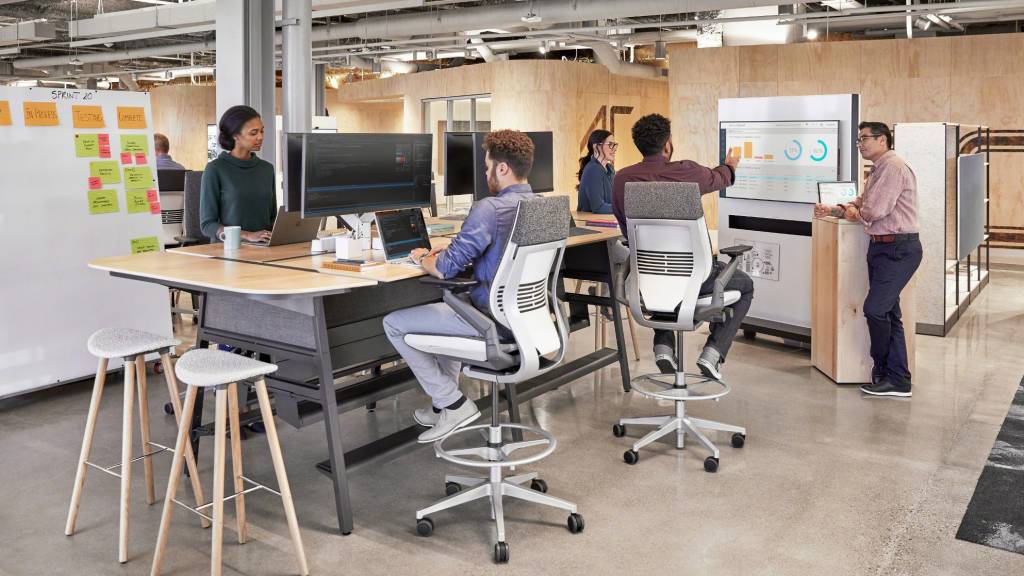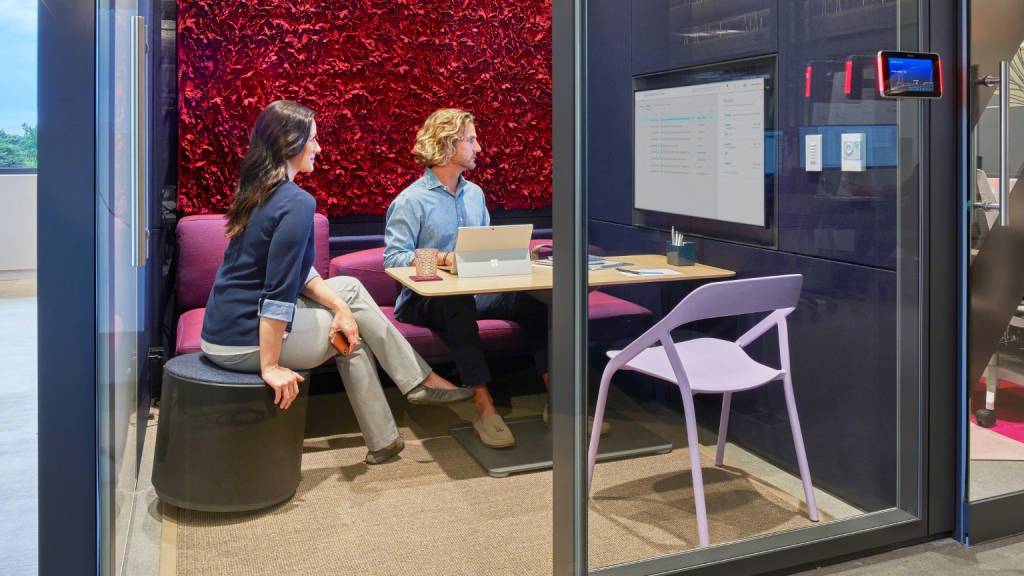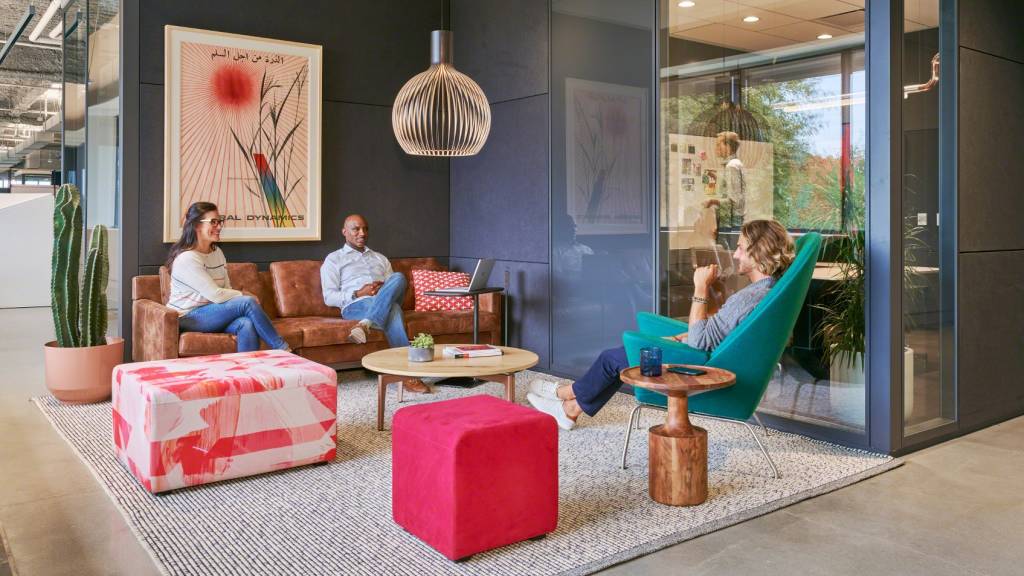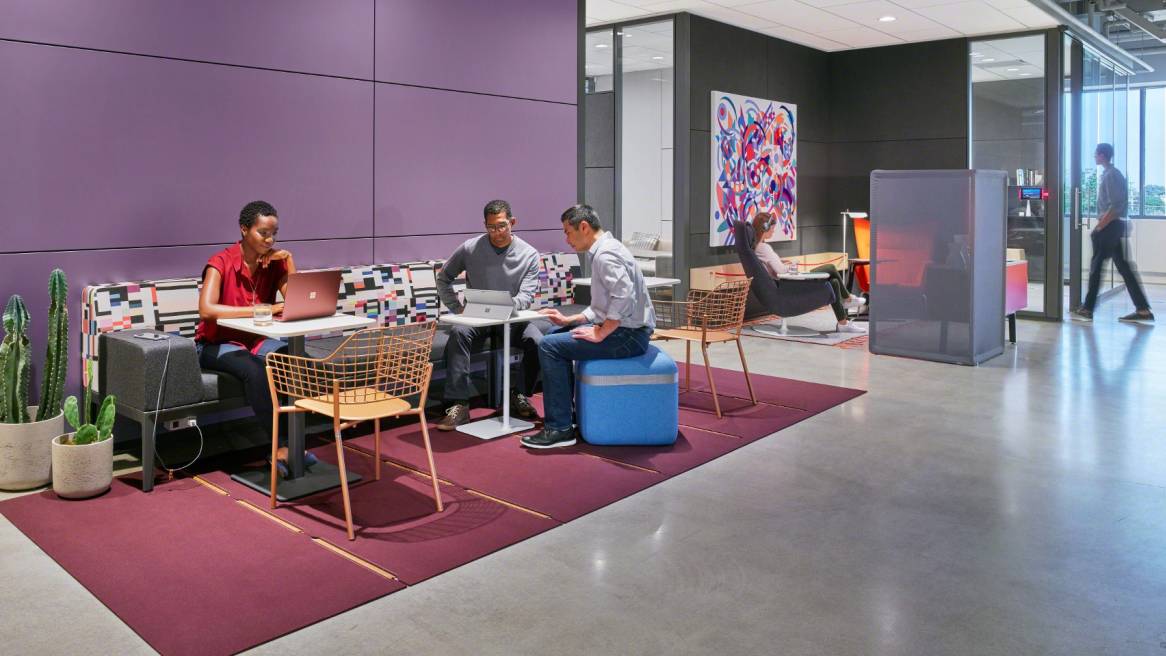Transforming IT at Steelcase: An Agile Case Study
Key Insights
“As our own work on agile has evolved, and we’ve collected learnings from global enterprises around the world looking to improve on agile, we developed key insights about more than space. They are about the intersection of culture, process and space.”
Julie Barnhart-HoffmanDesigner, Principal, WorkSpace Futures
Steelcase developed key insights and workplace strategy implications to help IT reach its desired outcomes. Four key insights embody what researchers and designers have discovered need to be in place in order for agile to successfully take hold.

Embed Learning
Make the Implicit, Explicit
Team members make their knowledge visible and accessible to the rest of the team; verbally and visually, vertically and horizontally and through analog and digital means.
Tinker, Test and Trust
Within agile, ‘failing’ results in great success because of the learning that occurs. Sharing challenges builds trust. And, small scale experimentation and celebrating the analog contribute to the team’s success.
Learn Together
Being present together, iterating based on customer feedback and accelerated improvements extends social learning over time. Agile teams launch to learn rather than launch and abandon (ex. release 1.0, release 2.0, etc.)
Measure, Improve, Focus
Agile teams sit side-by-side with customers and interact regularly. They embrace accountability, with measurements occurring at the team level providing for growth and anticipating future improvements.

Leverage Space in New Ways
Be Present
Agile teams are present in the space, allowing for nuanced communication and nonverbal cues that enhance communication, empathy and trust. Presence increases the immediacy of information and shared knowledge, supporting speed in problem solving.
Embrace Ambient Awareness
Ambient awareness involves using the space around team areas and passageways to support people. The surrounding environment can let people mentally offload information or tasks by writing them down and posting them nearby until the time is right to come back to them. It can also allow for cognitive relief – letting people look out the window or at artwork to give them a way to reflect and rejuvenate.

Lead in New Ways
Embrace a New Perspective on Leadership
Agile requires leaders who enable, empower and eliminate roadblocks for their teams. They are servant-leaders, accessible to their teams and storytellers who connect their teams to the agile “why.” They also must be advocates of agile within the organization.
Hold the Big Picture
Agile teams need to see how their team and individual work connects to the overall company strategy. They cannot be successful until the broader organization embraces agile. Human Resources, IT and Facilities Management must work together.

Build Networks
Treat the Team as a Unit
Agile teams allow for self-expression and strong identities such as you’d find in a closely knit group. Rather than planning for individuals, plan for teams including ways to recognize individuals and the team.
Foster Community
Team members who think of themselves as part of this greater whole are more fulfilled and able to make greater contributions. By living together as neighbors, an agile community develops a common language, shares knowledge, develops skills and works in a cross-disciplinary manner.
NEXT CHAPTER – Workplace Strategy Implications
PREVIOUS CHAPTER – Change Management


